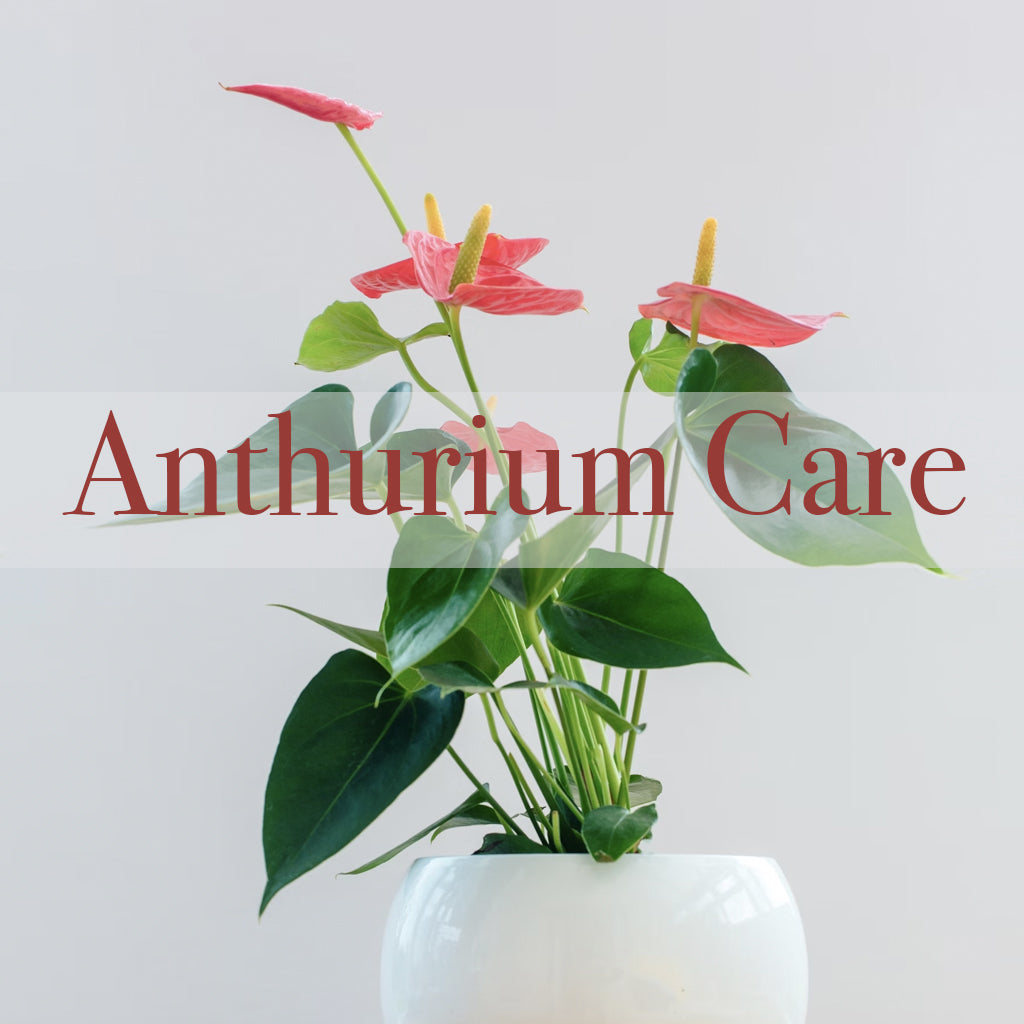Anthuriums, one of the most popular houseplants have heart-shaped spathes that add an exotic flair to indoor spaces. Often referred to as "Flamingo Flowers" or "Laceleaf," these tropical beauties are relatively easy to care for once compared to other flowering plants as they need lesser sunlight. They are quite suitable for beginners as well as seasoned plant growers, and we detail out some tips which would help you take care of your Anthuriums!
1. Light Requirements
Anthuriums thrive in bright, indirect sunlightlight. Direct sunlight can scorch their delicate leaves and spathes, so it’s best to place them in a spot where they receive filtered light. Morning sunlight is the most beneficial for Anthuriums. A north or east-facing window is ideal for providing the right balance. If you don’t have a naturally bright space, they can also adapt to lower light conditions, although they may not bloom as frequently.
Pro Tip: Rotate your Anthurium every few weeks to ensure even light exposure and prevent it from leaning toward the light source.
2. Watering Your Anthurium
Watering your anthuriums is very important, specially as they are susceptible to root rot! Make sure the pot has got good drainage to prevent water from accumulating at the bottom leading to root rot or other issues in the plant.
A good way to ascertain when to water is to check if the top inch of the soil feels dry when poked. If you keep your anthuriums indoors away from much sunlight then a general guidance would be to water it once or twice a week at the maximum while if its in balcony you might need to water it 4-5 times a week.
3. Humidity Needs
Being tropical plants, Anthuriums love high humidity levels. Ideally you want to pay attention to this mainly in the summers and some times in the winters as well. Common ways to increase humidity is to lightly mist the leaves every few days or place the pot in a tray with pebbles and little water to keep it humid. You can also keep the Anthuriums grouped with other plants to naturally increase humidity amongst them.
4. Potting and Soil Mixture
The right soil mixture is crucial for maintaining healthy Anthuriums. They thrive in a well-draining & light potting mix. A blend of orchid bark, peat moss, and perlite creates the perfect medium for these plants, allowing for adequate drainage and airflow around the roots.
When repotting, choose a pot that is only slightly larger than the current one. Anthuriums don’t mind being a bit root-bound, and a too-large pot can hold excess water, leading to root rot.
5. Fertilizing for Healthy Growth
Anthuriums benefit from regular fertilization, especially during the growing season. A balanced, water-soluble fertilizer diluted to half strength works best. Feed your plant every 6-8 weeks during spring and summer for optimal growth and blooming.
In the fall and winter months, reduce the frequency of feeding to allow the plant to rest.
6. Common Problems and Solutions
While Anthuriums are generally easy to care for, they can occasionally run into issues. Here are some common problems and how to address them:
- Yellowing Leaves: Often caused by overwatering or insufficient light. Check your watering schedule and adjust the light exposure.
- Brown Tips: This could be a sign of low humidity or too much direct sunlight. Increase humidity and move the plant to a shadier spot.
- Root Rot: If the soil stays too wet, root rot may occur. Repot the plant in fresh, well-draining soil and reduce watering frequency.
Anthuriums are not only visually stunning, but they also purify the air, removing harmful toxins like formaldehyde, ammonia, and toluene. This makes them an excellent choice for homes and offices alike. They also bloom year-round under the right conditions, adding color and vibrancy to your space no matter the season.
If you are looking to Buy Anthuriums to add to your home, you can browse through many different varieties available on myBageecha!






